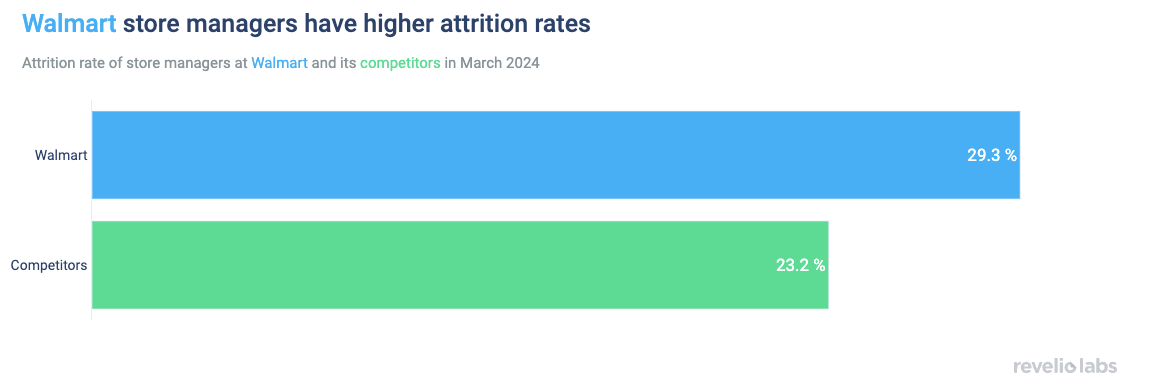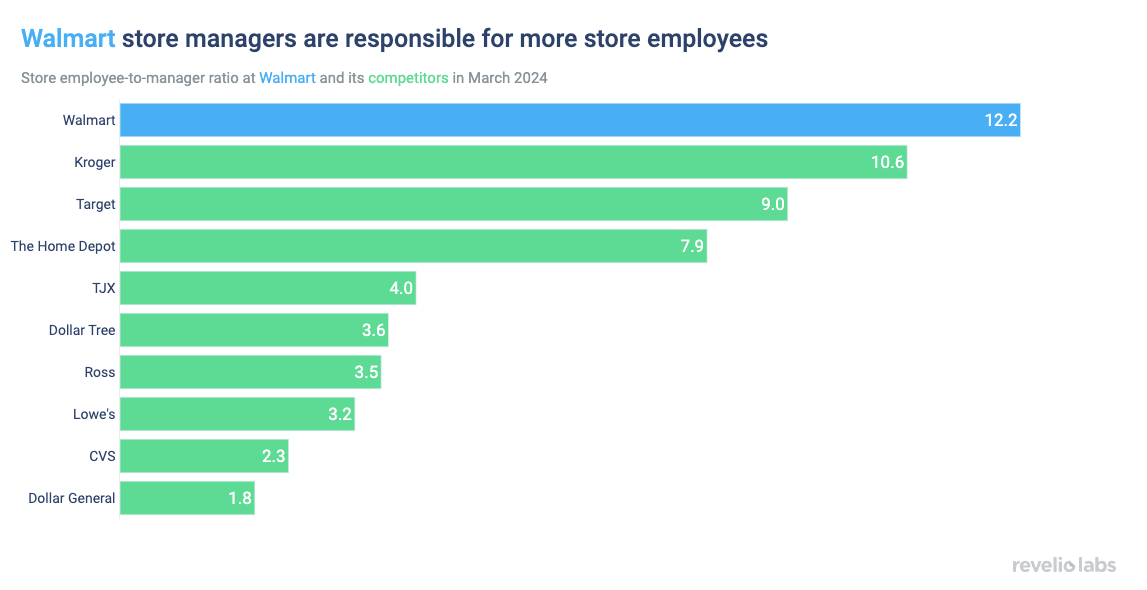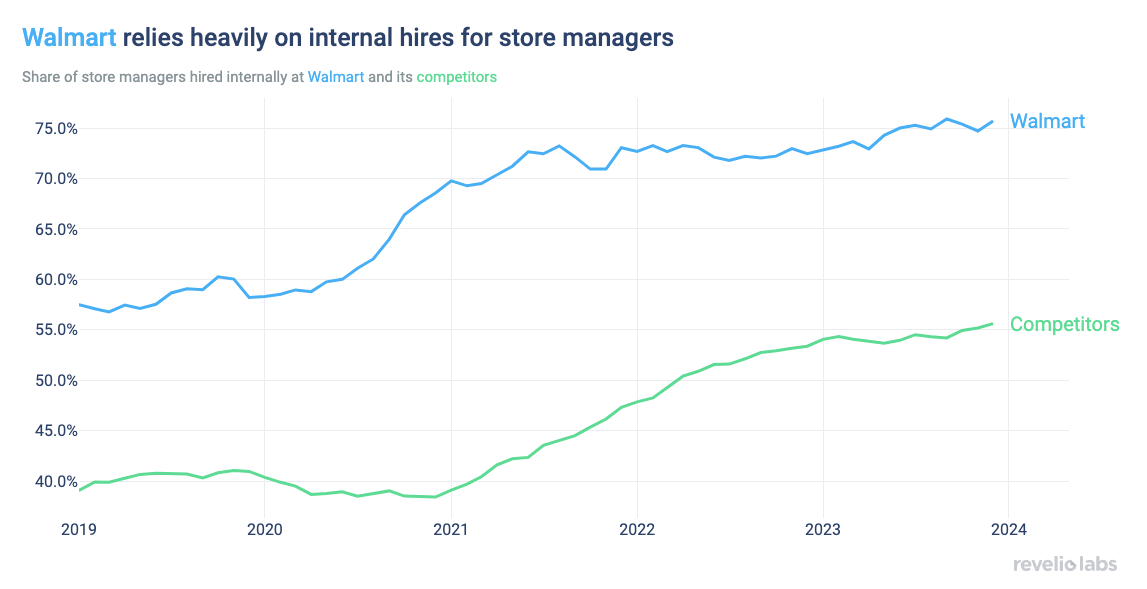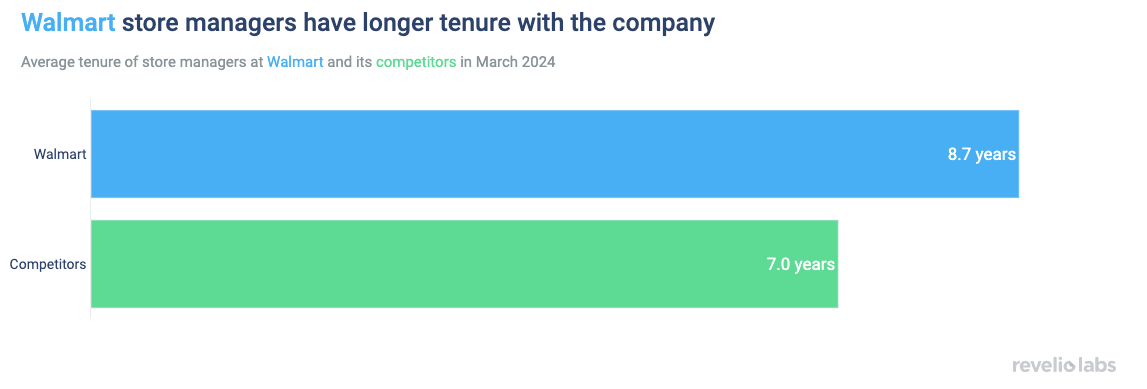Why Does Walmart Have to Pay Up to $400K to Its Store Managers?
The once penny-pinching brand has been increasing investments in its workforce

Walmart has been struggling with a higher turnover rate among its store managers relative to its competitors.
Walmart store managers have a more intense workload: Compared to competitors, they are responsible for the most employees and report higher stress. However, they don’t receive the highest pay.
Walmart is increasingly relying on internal hires to fill store manager positions. These store managers tend to have longer tenure at Walmart than those at its competitors, making the loss of talent even more costly.
Recently, Walmart has made headlines by investing significantly in its store managers, offering competitive pay and prioritizing training. Total pay for store managers can be as high as $400,000. These frontline workers are crucial to Walmart’s operations: They interact directly with customers and store employees, drive sales and foster employee retention. This week, we uncover the motivations driving these headlines news by examining the attrition rates and hiring channels for these store manager roles.
Using Revelio Labs’ HR database, we focus on store managers at Walmart and several competitors, including Target, Kroger, Lowe’s, Home Depot, TJX, CVS, Ross, Dollar Tree, and Dollar General. Our analysis of attrition rates shows that Walmart experiences a higher rate of turnover among its store managers relative to its competitors. When we track where these managers go after Walmart, we see that many pursue similar roles elsewhere: 39% of former Walmart store managers become store managers elsewhere, compared to 34% of its competitors.


What is causing this high attrition? One factor could be the store employee-to-manager ratio, which is highest at Walmart amongst our group of competitors - that is, store managers at Walmart are responsible for supervising more employees than store managers at similar companies. With larger store sizes and the potential for higher stress levels in managing both customers and employees, the workload for Walmart store managers may be more demanding, contributing to higher turnover rates.


Sign up for our newsletter
Our weekly data driven newsletter provides in-depth analysis of workforce trends and news, delivered straight to your inbox!
Additionally, Walmart managers have traditionally not been paid the highest among its competitors, which could also be a factor in their decision to leave. Compared to Target and Home Depot, the average pay for Walmart store managers is lower. Additionally, Home Depot and Target have much lower employee-to-manager ratios, resulting in more appealing, better-paid, and lower-stress positions.
High attrition rates of store managers can be quite costly. Looking at the hiring channels for these store managers, we see that Walmart relies heavily on internal hires for store managers compared to its competitors: Roughly 75% of current Walmart store managers are hired internally. This share has also increased significantly since the pandemic.


At the same time, Walmart store managers have longer tenure, suggesting that Walmart invests significant time and resources in training these employees. Many began at entry-level positions in the stores and were later promoted to managerial roles. They possess valuable knowledge about the company and their positions, which is lost when they leave.


Losing talented store managers can be incredibly costly for Walmart. Recruiting and training new managers is a time-consuming and resource-intensive process. Additionally, the departure of experienced managers can disrupt store operations and impact employee morale. It therefore does not come as a surprise that Walmart is thinking of strategies to retain its store managers, which not only helps Walmart hold onto valuable talent but also ensures the smooth operation of its stores and the satisfaction of its employees and customers.

